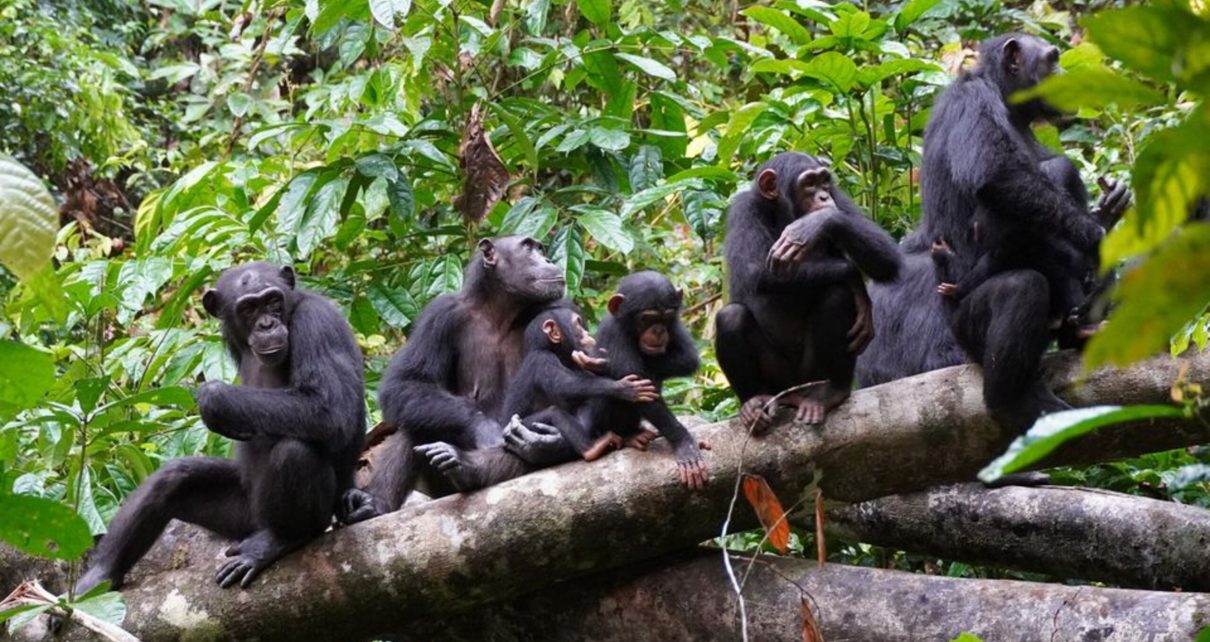In a region fraught with peril, a group of approximately 30 individuals engaged in a border patrol ascends a rugged hill for reconnaissance. Detecting the sounds of potential adversaries drawing near, the troop makes a strategic withdrawal. In the face of unfavourable odds, there is no rationale for risking combat.
This scene, a familiar occurrence throughout human history, unfolded not with humans but with chimpanzees in Tai National Park, located in southwestern Côte d’Ivoire. Tai National Park is West Africa’s largest protected rainforest area.
Researchers announced on Thursday that they have documented the tactical use of elevated terrain in warfare scenarios while conducting three years of daily observations of two neighbouring communities of wild western chimpanzees in Tai National Park.
According to the study’s findings, information gathered during hilltop reconnaissance influenced whether the chimpanzees ventured into enemy territory. These chimpanzees demonstrated a greater inclination to do so when the prospect of confrontation was minimised. This research marks the first time this age-old military strategy, employed by humans, has been observed in our closest living relatives, the chimpanzees.
University of Cambridge biological anthropologist Sylvain Lemoine, the lead author of the study published in the journal PLOS Biology, noted, “It shows sophisticated cognitive and cooperative skills to anticipate where and when to go, and to act upon gathered information in a safe way.”
Chimpanzee society, Lemoine explained, is marked by inter-group violence, with skirmishes occurring in overlapping border regions. Competition for space, particularly for food resources, is the primary cause of these clashes. Larger territories are advantageous as they reduce competition within groups and enhance female reproductive rates.
The two neighbouring chimpanzee groups studied in this research were roughly equivalent in size, comprising 40 to 45 individuals, with approximately five to six adult males and 10 to 13 adult females, and the remainder consisting of adolescents, juveniles, and infants. The hierarchy within chimpanzee groups is consistently male-dominated.
Chimpanzees are intensely territorial and undertake regular border patrols, coordinating their movements along the periphery of their territory. These border encounters can involve vocal exchanges, visual contact, or even physical confrontations with fights, bites, and chases. Killings are not uncommon, and victims can be of any age.
Climbing hills, in this case, does not primarily enhance the visual detection of rival community members but rather provides improved acoustic conditions for detecting adversaries through sound.
Sylvain Lemoine clarified, “The hilltops are covered in vegetation and do not offer good lookout points.” While perched atop these border hills, chimpanzees typically refrained from noisy eating or foraging, instead opting to rest and listen.
They were more likely to venture into potentially dangerous territory after descending from a hill, especially when the rival chimpanzees were at a greater distance. Such incursions occurred approximately 40% of the time when rivals were about 500 metres (three-tenths of a mile) away, 50% when rivals were about 1 km (six-tenths of a mile) away, and 60% when rivals were about 3 km (1.9 miles) away.
Chimpanzees and their close relatives, bonobos, share about 98.8% of their DNA with humans, making them the species most genetically similar to us. The split between the human and chimpanzee evolutionary lineages occurred approximately 6.9 to 9 million years ago.
By studying chimpanzee behaviour, scientists can gain insights into our own species. Lemoine explained, “We can better understand where we come from and what makes us human. We can better understand which kind of behaviours and adaptations were present in the last common ancestor between humans and chimpanzees and have a better idea of the sociality and behaviour of ancient hominin species.”
“It also teaches us what we have in common with our closest living relatives, how similar we are to wild animals, and that we only differ from our cousins in degree and not in nature,” Lemoine added.



